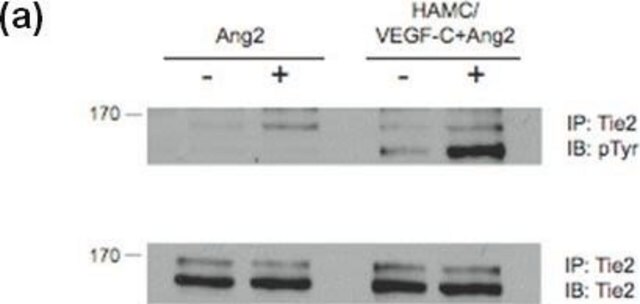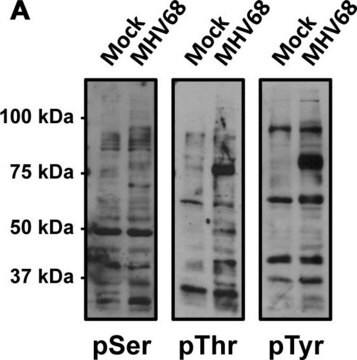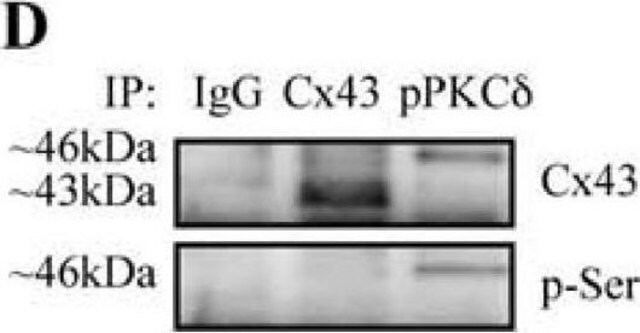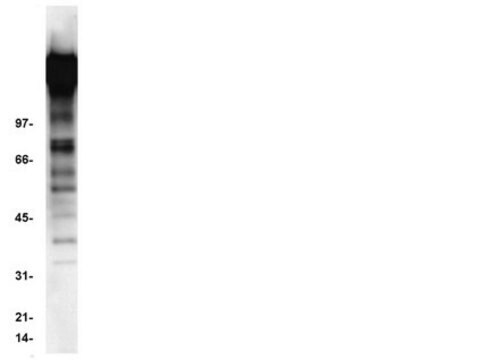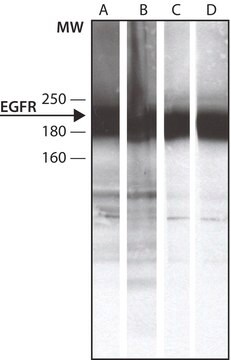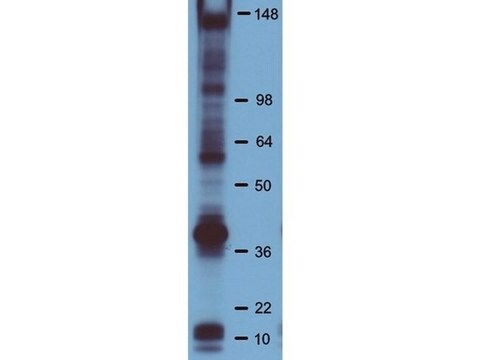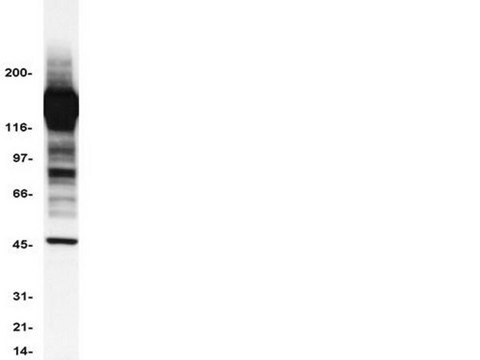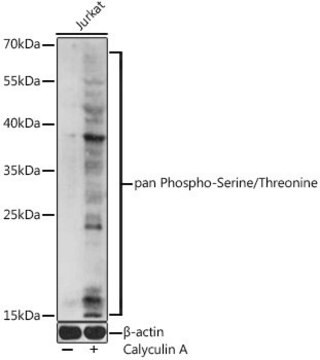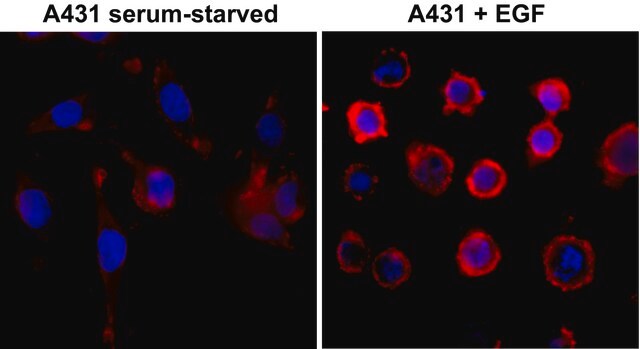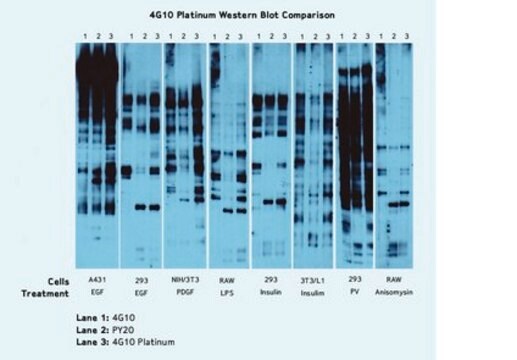06-427
Przeciwciało przeciw fosfotyrozynie
Upstate®, from rabbit
About This Item
Polecane produkty
pochodzenie biologiczne
rabbit
Poziom jakości
forma przeciwciała
affinity purified immunoglobulin
rodzaj przeciwciała
primary antibodies
klon
polyclonal
oczyszczone przez
affinity chromatography
reaktywność gatunkowa
human
reaktywność gatunkowa (przewidywana na podstawie homologii)
all (based on 100% sequence homology)
producent / nazwa handlowa
Upstate®
metody
immunoprecipitation (IP): suitable
western blot: suitable
Warunki transportu
wet ice
docelowa modyfikacja potranslacyjna
acetylation (test)
informacje o genach
human ... PID1(55022)
Opis ogólny
Specyficzność
Immunogen
Zastosowanie
Analiza immunoprecypitacji: 5 µl z reprezentatywnej partii immunoprecypitowało fosfotyrozynę w 0,5 mg lizatu komórek A431 poddanych działaniu EGF.
Sygnalizacja
Ogólne modyfikacje posttranslacyjne
Neuronauka sygnalizacyjna
Jakość
Western Blotting Analysis: A 1:500 dilution of this antibody detected Phosphotyrosine in 10 µg of EGF treated A431 cell lysate.
Opis wartości docelowych
Postać fizyczna
Przechowywanie i stabilność
Komentarz do analizy
Pozytywna kontrola antygenu: Katalog #12-302, lizat komórek A431 stymulowany przez EGF. Dodać 2,5 µl 2-merkaptoetanolu/100 µl lizatu i gotować przez 5 minut w celu zredukowania preparatu. Załadować 20 µg zredukowanego lizatu na pas do minigelów.
Inne uwagi
Informacje prawne
Oświadczenie o zrzeczeniu się odpowiedzialności
Nie możesz znaleźć właściwego produktu?
Wypróbuj nasz Narzędzie selektora produktów.
polecane
Klasa zagrożenia wodnego (WGK)
WGK 1
Temperatura zapłonu (°F)
does not flash
Temperatura zapłonu (°C)
does not flash
Certyfikaty analizy (CoA)
Poszukaj Certyfikaty analizy (CoA), wpisując numer partii/serii produktów. Numery serii i partii można znaleźć na etykiecie produktu po słowach „seria” lub „partia”.
Masz już ten produkt?
Dokumenty związane z niedawno zakupionymi produktami zostały zamieszczone w Bibliotece dokumentów.
Nasz zespół naukowców ma doświadczenie we wszystkich obszarach badań, w tym w naukach przyrodniczych, materiałoznawstwie, syntezie chemicznej, chromatografii, analityce i wielu innych dziedzinach.
Skontaktuj się z zespołem ds. pomocy technicznej